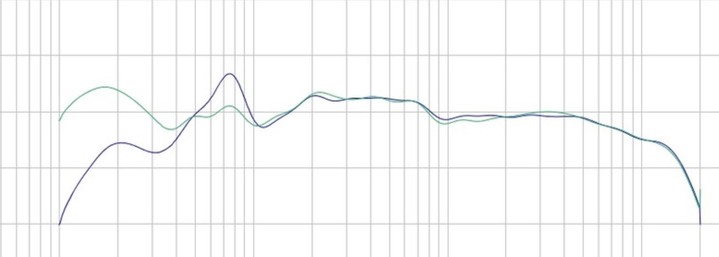The brief answer is that installing a run of optical fiber will make a
noticeable improvement audio quality because optical will not pass a specific class of a noise component, called
high-source impedance leakage current (current requires a "metal" cable for conduction). Optical will not pass "current" because it's passing photons as the signal, instead.
High-source impedance leakage current is one of the bad actors in this play, and is usally created by the switch-mode power supplies (SMPS) that are used as power supplles for almost all Ethernet routers, switches and fiber media convertors (FMCs), etc. The impact of high-source impedance leakage current is that it causes a specific form of jitter known as threshold jitter* and this class of jitter impacts
timing, which are brains are very sensitive to down in the picosecond range when listening to music (and why good DACs and streamers, etc, require femtoclocks).
The other bad actor is the common-mode noise referred to above.
With respect to your setup, an effective path is:
Music server->good Ethernet->Ethernet router or switch->better Ethernet->FMC->fiber (usually LC/LC single-mode)->FMC->Best Ethernet cable->your Lumin T2
If it's in your budget, I'd recommend the Venom or Venom-X Ethernet cable at the downstream (destination) end. The destination end is the most impactful end. If you have the budget for another quality Ethernet cable, the next most important position is from the
router to the FMC at the upstream end, and 3) from the music server to the router.
You want to use the highest-quality networking components closest to your Lumin T2 at the destination end.
A
key component is that the power supplies for the Ethernet switch and FMCs, etc. need to be clean, low-noise linear power supplies. Good news is that you can get a good-quality linear power supply from Jameco Electronics for the Ethernet switches and FMCs for about $15/each.
AC/DC Linear Power Supplies Regulated | Jameco Electronics
You can start with "generic" FMC's, e.g TP/Link, etc., just be sure to use one with an LC/LC single-mode optical transceiver port. Better FMC subsystems are are availabe in the SOtM sNH-10G High-End Audio Ethernet switch, and the Sonore OpticalModule Deluxe. The most important FMC is the one at the destination end, and it needs to be powered by a good LPS. I've heard good things about the Teddy Pardo power supply, and I would imagine the SOtM sPS-500 is a good one, as well. But if you're budget-constrained, you can use the Jameco Reliapro wall-wart style LPS's.
SOtM sNH-10G High-End Audio Switch
sNH-10G High-End Audio Switch Hub – Crux Audio USA
Sonore OpticalModule Deluxe:
Sonore - OpticalModule Deluxe
One of the best optical transceivers is the Finisar FTLF8519P3BNL 1000BASE-SX 2.125Gb/s 850nm LC Connector SFP Transceiver. You can get 'em at Amazon.
If you got the SOtM Ethernet switch AND the OpticalModule Deluxe(OM), you could try either in each position, upstream or downstream, and determine which configuration sounds best. Both of these require quality linear power supplies. Ideally, use SOtM or OM Deluxe in both locations, upstream and downstream.
Your Lumin T2 is an excellent streamer/DAC, so you're all set there.
As for the improvements, every improvement made in the path above will make the presentation sound better "across the board": more natural, accurate, and involving, with improved clarity, transparency, resolution and dynamics, and notably less hash, grit, grain, and grunge. The bass and lower octaves power and definition will improve and the highs will sound more extended and natural. Instrumental and vocal tone and timbre will be more accurate, natural, and articulated. You should be able to hear the "decay" of notes trailing off in the recording venue/space.
*-You should at least read this white paper by professional networking and UpTone and Sonore engineer, John Swenson:
https://cdn.shopify.com/s/files/1/0660/6121/files/UpTone-J.Swenson_EtherREGEN_white_paper.pdf?v=1583429386
I guess that wasn't so brief, after all.

But, this should get you going. Feel free to reach out if you have more questions, either here or via PM. Cheers.



